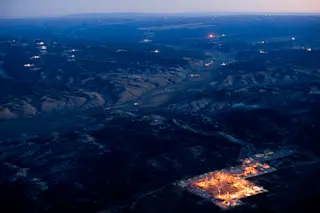Last week brought news that 2021 was shaping up to be quite cool globally. And now, as if to underscore it, an unusual May snowstorm is poised to blast Montana's mountains.
But global warming definitely has not gone on holiday. As I wrote in my previous post, we're most likely just seeing the temporary cooling influence of La Niña. Meanwhile, over the long run, our emissions of greenhouse gases are continuing to push the climate system further and further out of balance.
In fact, NOAA announced in April that levels of both carbon dioxide and methane "continued their unrelenting rise in 2020," despite the pandemic-induced economic slowdown.
Methane is of particular concern. It is a "potent greenhouse gas tens of times more powerful than carbon dioxide at warming the atmosphere," states a major assessment published earlier this month by the United Nations Environment Program. "Methane’s atmospheric concentration has more than ...














